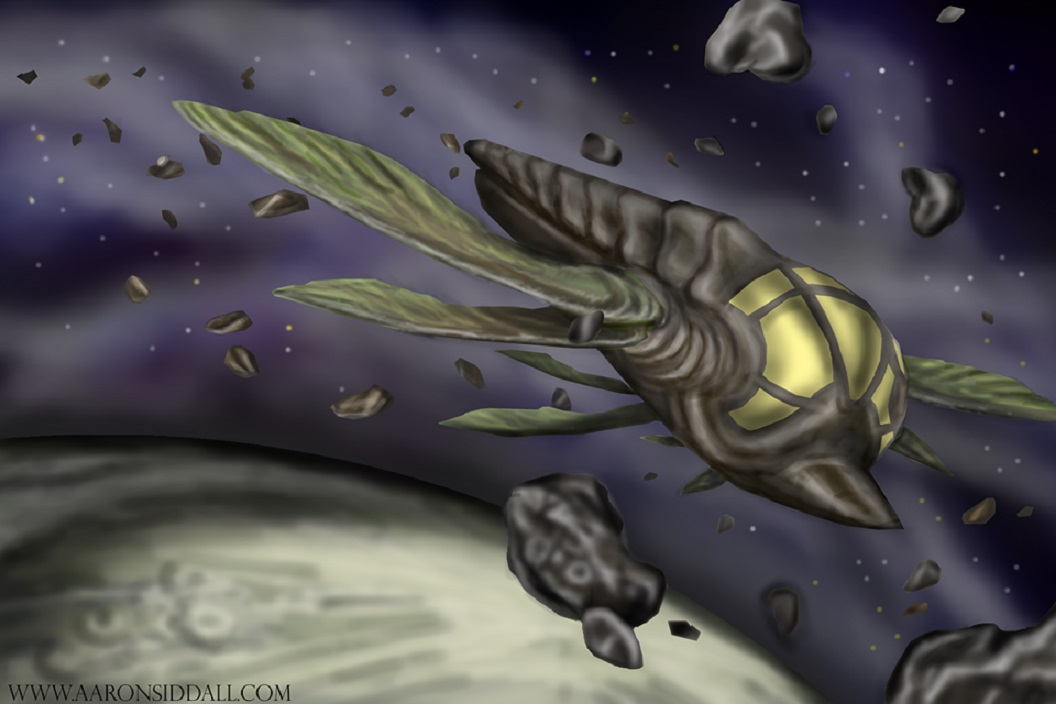Gnome
Basic Information
Anatomy
As homo sapiens, gnomes are built generally like diminutive humans, with two arms, two legs, one head, etc. They are generally proportional to humans, though their hands, feet, and heads tend to be large for their bodies. Unlike homo sapiens sapiens, in addition to common colours, homo sapiens nasus can grow hair that varies in hue from blue, to green, to orange, to purple with eyes of complementary shades. A full-grown gnome stands a little more than half the height of the average human (approximately 104 cm (3 feet 5 inches) for males) and about ¼ of the weight (18 kg (40 pounds) for males) with females 4 to 5 cm (2 inches) smaller and 2 kg (5 pounds) lighter.
Biological Traits
Though gnomes can live up to 500 years, theoretically, a gnome over the age of 400 would be very rare, although one living to 350 is quite common. A gnome male can expect to average 104 cm (3 feet 5 inches) with heights of over 112 cm (3 feet 8 inches) and smaller than 96 cm (3 feet 2 inches) being exceptionally rare. Females of the species can expect to be about 5 cm (2 inches) shorter than the equivalent male. On the average a male gnome weighs about 18 kg (40 pounds) as an adult with females being about 2.25 kg (5 pounds) smaller than the males of the same age.
Biologically, gnomes differ from other homo sapiens in that they have evolved a redundant liver. This gives gnomes incredible resilience to toxins and disease. Though the liver of dwarves is almost twice the size of the liver in a human, only gnomes and goblins have developed a redundant second liver. Gnomish eyes are naturally attuned to seeing in conditions of low-light, and have adapted to seeing into the ultraviolet spectrum. Ultimately, a gnome can see about twice as far as a human where vision is restricted due to light, or rather lack thereof.
Biologically, gnomes differ from other homo sapiens in that they have evolved a redundant liver. This gives gnomes incredible resilience to toxins and disease. Though the liver of dwarves is almost twice the size of the liver in a human, only gnomes and goblins have developed a redundant second liver. Gnomish eyes are naturally attuned to seeing in conditions of low-light, and have adapted to seeing into the ultraviolet spectrum. Ultimately, a gnome can see about twice as far as a human where vision is restricted due to light, or rather lack thereof.
Genetics and Reproduction
Gnome infants are born about 830 g (1.85 pounds) and about 29 cm (11.5 inches) long. Gestation is a matter of about 70 days with female gnomes becoming fertile again immediately after pregnancy. Gnomes tend to have less children than similar human families, though children are always seen as a blessing.
Growth Rate & Stages
In the early stages, a gnome develops only slightly slower than a human of equivalent age. A 4-year-old human, and a gnome of four years are pretty much the same level of development, with development slowing as the gnomling reaches adolescence and puberty. So, where a human reaches the beginnings of adolescence and puberty around 9 to 11, a gnome doesn’t begin puberty until 13 to 15, and where a human finishes development about 25, a gnome will not finish developing until about age 40.
Ecology and Habitats
Like other homo sapiens, gnomes tend to inhabit areas with access to plenty of water, and a variety of edible flora and fauna. They are more gatherers and farmers than they are hunters and conquerors, and being of small size, they do not take to combat easily. So, while gnomes are definitely masters of their environment, they, out of necessity, live a much more harmonious existence with nature.
Dietary Needs and Habits
In general, gnomes are less carnivorous than humans, though that varies wildly as it does with other homo sapiens, with both vegan and vegetarian gnomes being slightly more common. Gnomes prefer their fruit ripe, often eating it after it has been fermented, and they definitely prefer wines and ales/beers over hard liquor.
Biological Cycle
Gnomes reach puberty about 13 to 15, and adulthood at about 40. Late stage growth and early stage deterioration take place at an increasingly diminished a rate as the gnome continues to age, with middle age setting in about 100 years after they’re born, only being considered “old” at about 150 while routinely living about 360 years. While this does affect things like hair growth (premature balding is common among all genders), fingernail and toenail growth (most gnomes keeping short fingernails out of practicality) and fertility (all genders becoming effectively sterile by about age 100-150), it does not affect things like replenishment of hormones, healing, diet, or sleep patterns. These things occur at a proper rate for someone of their level of physical development and health. So, a middle-aged gnome of 100 years and a middle-aged human of about 35 years, all other things being equal (general health, physical condition, mental state, etc.), will need about the same amount of sleep, eat proportionately the same amount of food, heal at the same rate, and the like.
Additional Information
Social Structure
The one thing that can be said about gnomish social structure, is that gnomes are not monolithic. Social structure is not a matter of species but of culture in an intelligent race.
Facial characteristics
Gnomes tend to have faces that smile easily, and eyes that imply both humour and wisdom. Male gnomes often have very large noses which is seen as a sign of intelligence, and thus attractive. Female gnomes often have upturned button noses that are seen as adorably cute by males of all species.
Geographic Origin and Distribution
As a ubiquitous species, gnomes can be encountered pretty much anywhere.
Average Intelligence
It is a fairly common misconception that gnomes are brighter than everyone else. Where gnomes tend to value intelligence more than other species, extensive testing has proven that on average gnomes are no more astute than most other homo sapiens.
Perception and Sensory Capabilities
Gnomes tend to be very keen sensed. Their eyes can capture as many colors as human eyes, but are also adapted to see in the ultraviolet spectrum. Their ears, which often are oversized for their heads, when compared to humans, are adapted to hear sounds slightly better than humans, and their noses (for which males are known) have about twice as many olfactory sense organs as do humans. Gnomes show a propensity for psionics and psychic magic.
Civilization and Culture
Naming Traditions
Naming traditions vary as widely as cultures among the gnomes do.
Major Organizations
The Council of Whirlybird
The Gnomish Bugmen
The Gnomish Bugmen
Beauty Ideals
Female gnomes find large noses to be particularly attractive. However, with that in mind, female gnomes’ ideals of beauty vary wildly. Male gnomes tend to find symmetry beautiful in women, but most prefer little upturned button noses.
Gender Ideals
Though there is enough gender dimorphism between gnomes for there to be a physical difference in size, unlike humans, gnomes do not possess an additional 30% upper body strength in males, nor do female gnomes possess considerably more endurance than male gnomes. That being said, what a female gnome values in a male gnome is intelligence, and what a male gnome values in a female gnome is also intelligence.
Courtship Ideals
Courtship ideals are a matter of culture and vary wildly between gnomes of different cultures.
Relationship Ideals
What a gnome desires in a relationship varies from gnome to gnome as it does with any intelligent species.
Average Technological Level
At least some cultures of gnomes have obtained the technology of steam power and gunpowder, though some of their technology is downright magical to others.
Common Etiquette Rules
What passes for common etiquette among gnomes varies from culture to culture though, as a sign of intelligence, all gnomes like a compliment on their nose.
Common Customs, Traditions and Rituals
There are really no common customs and observed traditions between cultures of gnomes, although the compliment of one’s nose borders on a common observed tradition.
Common Taboos
There are no taboos that are universal to gnomes. However, individual cultures have their own individual taboos.
History
Gnomes are not monolithic so trying to describe their history in the terms of “all gnomes” would be impossible. History is also a matter of culture and not species in an intelligent race.
Historical Figures
Common Myths and Legends
The myths and legends of the gnomes are as varied as the cultures of the gnomes.
Interspecies Relations and Assumptions
How the gnomes view other races varies from gnome to gnome and from culture to culture, but in general gnomes tend to be pretty open minded toward interspecies relationships.
Don't forget that you can click on the blue compass on the left to access the Table of Contents at any time!

Want to read all of the Toy Soldier Saga fiction, even before the rest of the world does?Subscribe now!
Scientific Name
Homo Sapiens Nasus
Lifespan
360 years
Conservation Status
Gnomes are ubiquitous throughout known space. Basically, anywhere that you can find civilization, you can find gnomes. Though they often band together in neighbourhoods, gnomes can be found interspersed among the sentient races. The exception is, in most instances, you will not find gnomes settling among goblins.
Average Height
Males 104 cm (3 feet 5 inches)
Females 99 cm (3 feet 2 inches)
Females 99 cm (3 feet 2 inches)
Average Weight
Males 18 kg (40 pounds)
Females 15.75 kg (35 pounds)
Females 15.75 kg (35 pounds)
Average Physique
Gnomes tend to value intelligence over physical prowess. Accordingly, athletic gnomes tend to be few and far between. However, an exception to this is the Gnomish Olympics held septannually and the Gnomish Winter Games held every six years. Gnomish athletes from all over known space gather at the host gnomish city to test their mettle in a series of games both amusing and awe inspiring. These gnomes tend to be very physically fit.
Body Tint, Colouring and Marking
The skin tones of a gnome are as varied as other homo sapiens ranging from pale pink to deep, almost black, brown and from rich coppery red to pale yellow, just like homo sapiens sapiens. Their hair and eyes, however, show the differences in species. In gnomes, hair and eyes can be “normal” colours, but more often they are brightly colored in reds, blues, greens, purples and pinks.
Geographic Distribution
Related Organizations



Comments